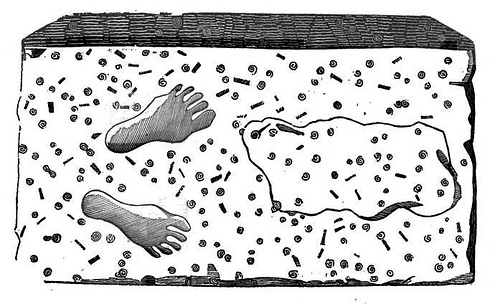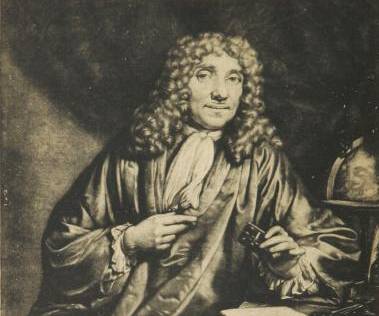
“Two apparent prints or impressions of the human foot in a tabular mass of limestone,” discussed in Schoolcraft’s Travels in the Central Portions of the Mississippi Valley, 1825:
The rock containing these interesting impressions is a compact limestone of a grayish blue color. It was originally quarried on the left bank of the Mississippi at St. Louis, and is a part of the extensive range of calcareous rocks upon which that town is built. Foundations of private dwellings, and the military works erected by the French and Spaniards, from this material, sixty years ago, are still as solid and unbroken as when first laid.
“The probability … of their having been imparted by some individual of a race of men who were unacquainted with the art of tanning skins, and at a period much anterior to that to which any tradition of the present race of Indians reaches, derives additional weight from this peculiar shape of the feet.”




